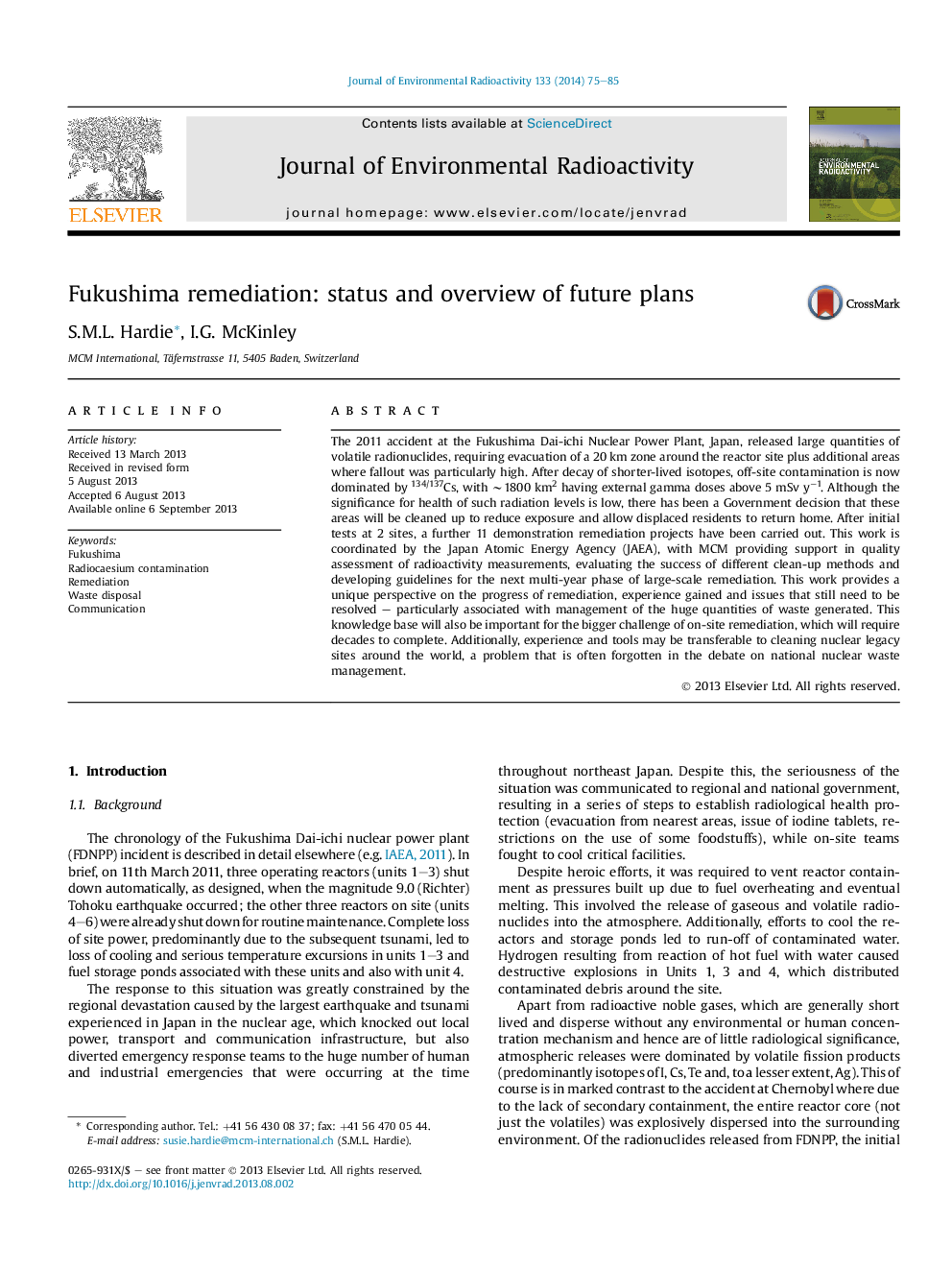| Article ID | Journal | Published Year | Pages | File Type |
|---|---|---|---|---|
| 1737999 | Journal of Environmental Radioactivity | 2014 | 11 Pages |
The 2011 accident at the Fukushima Dai-ichi Nuclear Power Plant, Japan, released large quantities of volatile radionuclides, requiring evacuation of a 20 km zone around the reactor site plus additional areas where fallout was particularly high. After decay of shorter-lived isotopes, off-site contamination is now dominated by 134/137Cs, with ∼1800 km2 having external gamma doses above 5 mSv y−1. Although the significance for health of such radiation levels is low, there has been a Government decision that these areas will be cleaned up to reduce exposure and allow displaced residents to return home. After initial tests at 2 sites, a further 11 demonstration remediation projects have been carried out. This work is coordinated by the Japan Atomic Energy Agency (JAEA), with MCM providing support in quality assessment of radioactivity measurements, evaluating the success of different clean-up methods and developing guidelines for the next multi-year phase of large-scale remediation. This work provides a unique perspective on the progress of remediation, experience gained and issues that still need to be resolved – particularly associated with management of the huge quantities of waste generated. This knowledge base will also be important for the bigger challenge of on-site remediation, which will require decades to complete. Additionally, experience and tools may be transferable to cleaning nuclear legacy sites around the world, a problem that is often forgotten in the debate on national nuclear waste management.
